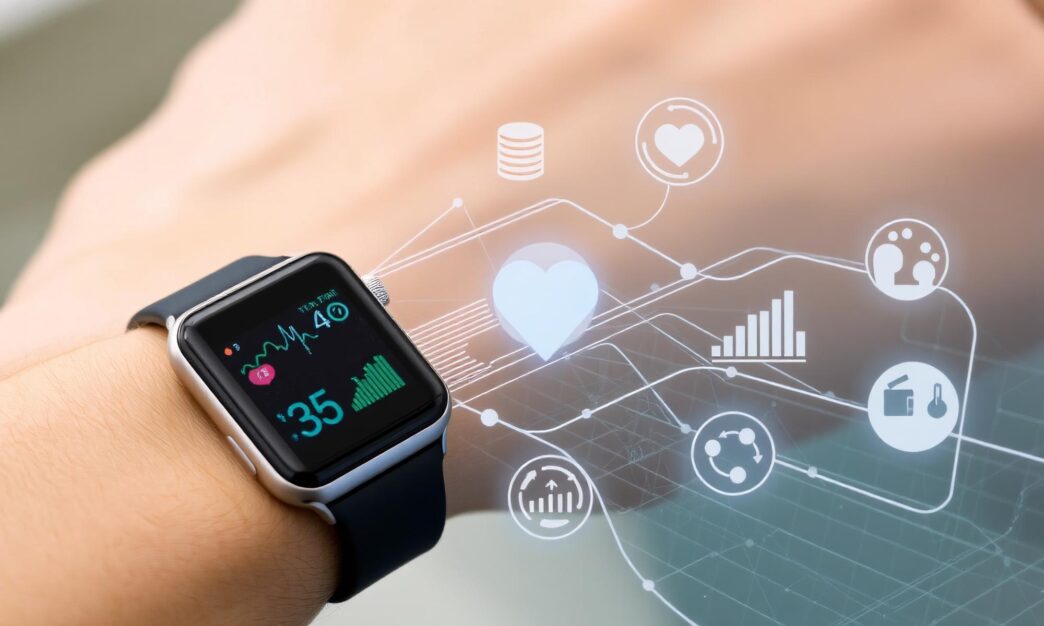A Quick Takeaway
The Story Behind the Trend
How to Make It Work for You
The Community View
Wearable technology is fundamentally reshaping how individuals approach and manage their personal health, offering unparalleled, real-time insights directly from devices worn on the body. This pervasive revolution empowers anyone, from fitness enthusiasts to those managing chronic conditions, to proactively monitor vital signs, track activity, analyze sleep patterns, and understand stress levels, leading to more informed decisions about their lifestyle and overall well-being, anytime and anywhere.
What is Wearable Technology?
Wearable technology encompasses electronic devices that users wear on their bodies, often designed to collect data about their health, fitness, or environment. These devices include smartwatches, fitness trackers, smart rings, continuous glucose monitors, and even smart patches, all integrated with sensors to capture various physiological metrics.
The core function of these gadgets is to provide a continuous stream of personal health data, making health management an ongoing, data-driven process rather than an episodic one. This constant feedback loop helps users stay engaged with their health goals and identify trends over time.
Key Health Metrics Tracked
Modern wearable devices are equipped with sophisticated sensors capable of monitoring a wide array of health indicators, providing a holistic view of one’s physical state.
Heart Rate and ECG
Most wearables track heart rate continuously, offering insights into resting heart rate, heart rate variability, and heart rate during exercise. Advanced devices can perform electrocardiograms (ECGs), detecting irregular heart rhythms such as atrial fibrillation, a common heart condition.
Early detection of such anomalies can be life-saving, prompting users to seek medical attention before serious complications arise. This feature bridges the gap between daily self-monitoring and clinical diagnostics.
Sleep Quality
Wearables analyze sleep patterns by tracking movement, heart rate, and sometimes blood oxygen levels throughout the night. They can differentiate between sleep stages—light, deep, and REM—and provide a comprehensive sleep score.
Understanding sleep quality is crucial for overall health, impacting mood, cognitive function, and physical recovery. These insights empower users to identify poor sleep habits and make necessary adjustments.
Activity and Steps
Perhaps the most common function, wearables meticulously count steps, estimate distance traveled, and calculate calories burned. They often include features like activity goals, inactivity alerts, and tracking for specific workouts.
This data serves as a powerful motivator, encouraging users to maintain an active lifestyle and meet daily movement targets, contributing significantly to cardiovascular health and weight management.
Blood Oxygen (SpO2)
Many devices now include pulse oximeters to measure blood oxygen saturation levels. Low SpO2 can indicate underlying respiratory issues or conditions like sleep apnea.
Monitoring SpO2 can be particularly useful for athletes training at altitude or individuals concerned about respiratory health, offering a non-invasive way to check a vital sign.
Skin Temperature
Some wearables monitor skin temperature, which can fluctuate with illness, environmental changes, or even the menstrual cycle. This data can provide an early warning sign of fever or help women track ovulation.
While not a diagnostic tool, consistent temperature tracking helps users understand their body’s baseline and detect deviations that might warrant further attention.
Stress Levels (EDA/HRV)
Through galvanic skin response (EDA) or heart rate variability (HRV), certain wearables can estimate stress levels throughout the day. They often provide guided breathing exercises or mindfulness prompts to help users manage stress.
Recognizing and managing stress is vital for mental health and preventing chronic health issues. Wearables offer actionable strategies to mitigate stress in real-time.
Benefits of Wearable Tech in Health Management
The integration of wearable technology into daily life brings a multitude of advantages that extend beyond simple data collection.
Proactive Health Monitoring
Wearables shift the paradigm from reactive to proactive healthcare by continuously monitoring health metrics. This allows users to spot subtle changes or emerging patterns that might indicate a health issue before it becomes severe.
Early detection through consistent data can lead to timely interventions, potentially preventing the progression of diseases and improving long-term health outcomes.
Personalized Insights and Coaching
Beyond raw data, many wearable apps use algorithms to provide personalized insights, recommendations, and even virtual coaching. These tailored suggestions can include advice on exercise routines, sleep hygiene, or stress reduction techniques.
This personalized approach makes health advice more relevant and actionable for the individual, fostering better adherence to healthy habits.
Enhanced Motivation and Accountability
The immediate feedback and goal-setting features inherent in wearables serve as powerful motivators. Seeing progress, hitting daily targets, and even competing with friends through app integrations can significantly boost commitment to health goals.
Wearables create a sense of accountability, turning health management into an engaging and achievable daily practice.
Remote Monitoring and Telemedicine
For individuals managing chronic conditions or those in remote areas, wearables facilitate remote patient monitoring. Healthcare providers can access aggregated data, allowing for timely adjustments to treatment plans and virtual consultations.
This capability revolutionizes chronic disease management, reduces hospital visits, and expands access to quality care, making healthcare more accessible and efficient.
Improved Lifestyle Choices
By connecting daily activities and physiological responses to tangible data, wearables empower users to make more informed lifestyle choices. Understanding the impact of a late-night meal on sleep or a stressful meeting on heart rate fosters greater self-awareness.
This deeper understanding encourages sustainable behavioral changes that contribute to overall health and well-being.
Choosing the Right Wearable Device
With a plethora of options available, selecting the ideal wearable device requires careful consideration of individual needs and priorities.
Identify Your Needs
Determine your primary goals: Are you focused on general fitness, sleep improvement, stress management, or monitoring a specific health condition? Different devices excel in different areas.
Aligning the device’s capabilities with your personal health objectives will ensure you get the most value from your investment.
Accuracy and Reliability
Research the accuracy of the sensors and the reliability of the data provided by different brands. Look for devices that have been validated in studies or have a strong reputation for precision.
Inaccurate data can lead to misguided health decisions, so precision is paramount for effective health management.
Comfort and Battery Life
Since you’ll be wearing the device constantly, comfort is key. Consider the design, material, and weight. Battery life is also crucial; a device that frequently needs charging can be cumbersome and disruptive.
Practical considerations like these ensure the device seamlessly integrates into your daily routine without becoming a nuisance.
Data Privacy and Security
Investigate how a company handles your personal health data. Understand their privacy policies and security measures to protect your sensitive information from breaches or misuse.
Your health data is highly personal, so choosing a device from a reputable company with robust privacy protocols is essential.
Ecosystem and App Integration
Consider how well the device integrates with other apps, smart home devices, or health platforms you already use. A cohesive ecosystem enhances the user experience and centralizes your health data.
Seamless integration ensures that your wearable complements, rather than complicates, your existing digital life.
The Future of Wearable Health
The landscape of wearable technology is continuously evolving, promising even more sophisticated and integrated health management solutions. Expect to see advancements in non-invasive glucose monitoring, continuous blood pressure tracking, and more precise diagnostic capabilities.
Artificial intelligence and machine learning will play an increasingly significant role, offering predictive health analytics and truly personalized interventions, moving us closer to a future where our devices not only track health but actively guide us towards optimal well-being.







